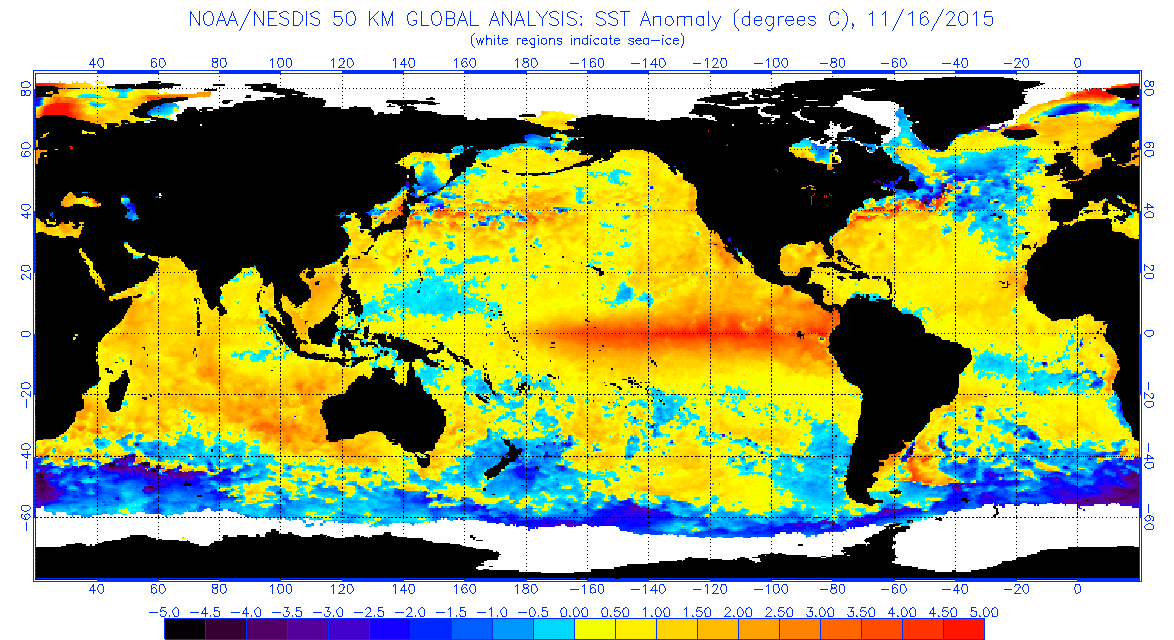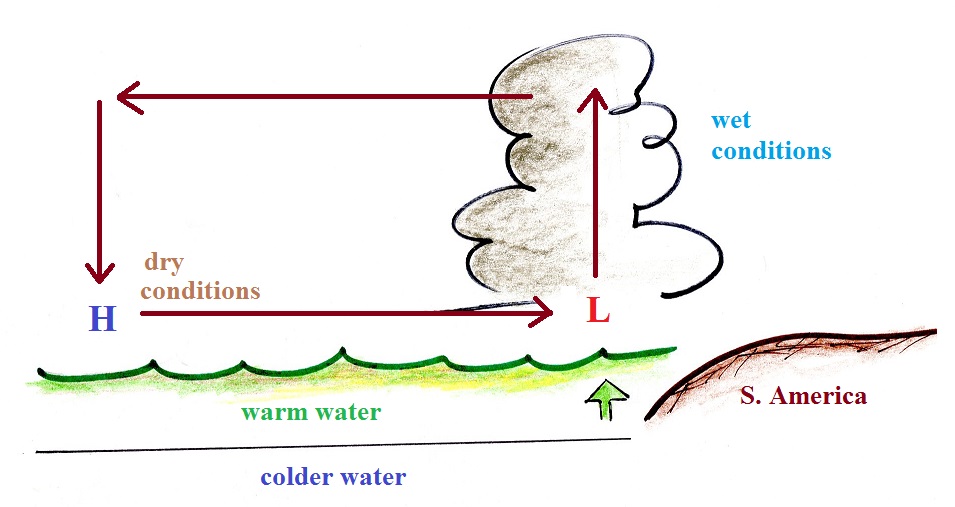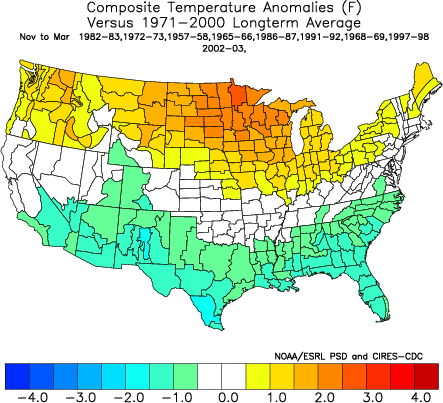
Winds spinning around the semi permanent
subtropical High pressure centers (clockwise around the
Pacific high in the northern hemisphere and counterclockwise
around its counterpart in the southern hemisphere) drive the
California current and the Peru/Humboldt current. At the
equator the easterly trade winds carry water from the eastern
Pacific toward the west (sea level in the western Pacific is
slightly higher than in the eastern Pacific). Sunlight
warms the water as it moves westward and some of the warmest
ocean water in the world is normally found in the western
tropical Pacific (almost 10 C warmer than in the eastern
Pacific). The westward moving north
equatorial and south equatorial currents are shown
above. Not shown in the figure is a return current, the
eastward flowing equatorial countercurrent that transports
water in the opposite direction.








